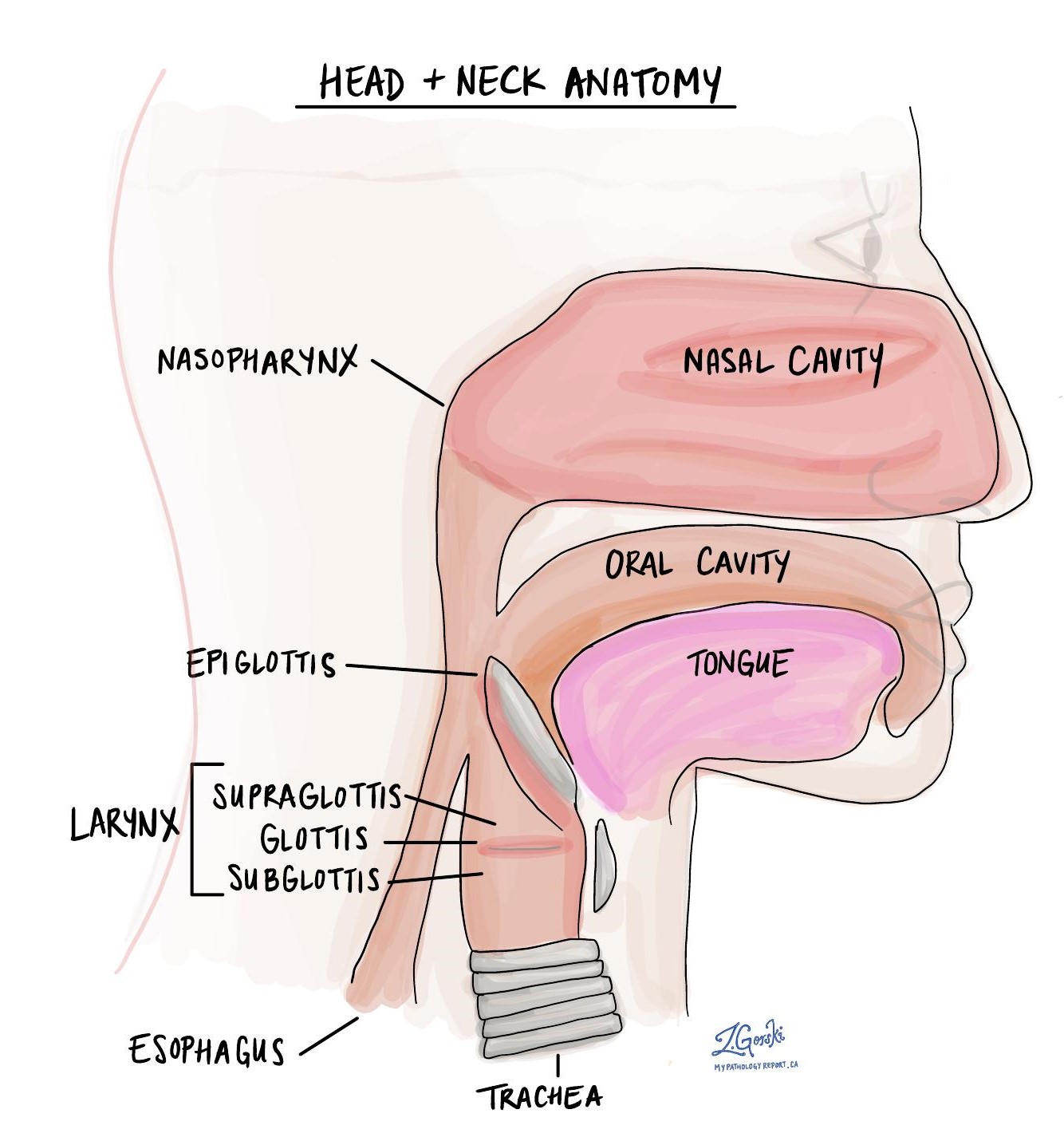The larynx is a hollow tube that allows air to pass from the pharynx to the trachea. It is important for breathing and the production of sound. The larynx is located near the middle of the neck.
What types of cells are found in the larynx?
Specialized squamous cells cover most of the inside surface of the larynx, forming a barrier called the epithelium. The epithelium rests on a type of connective tissue called a stroma.

Parts of the larynx
The larynx is divided into the supraglottic larynx, glottis, and subglottic larynx.
Supraglottic larynx
The supraglottis is the first section of the larynx. The supraglottic larynx comprises several smaller parts, including the epiglottis, aryepiglottic folds, arytenoids, false vocal cords, and ventricles.
Glottis
The glottis is the second section in the middle of the larynx. The glottis comprises several smaller parts, including the true vocal cords, posterior commissure, and anterior commissure. Most laryngeal cancers start in the glottis.
Subglottic larynx
The subglottis is the third and last section of the larynx. Unlike the other sections of the larynx, the subglottis is not made up of many smaller parts. The subglottic larynx connects with the trachea (windpipe).
What is the most common type of cancer in the larynx?
The most common type of laryngeal cancer is called squamous cell carcinoma. In the larynx, this type of cancer is typically caused by smoking and excessive alcohol consumption.
What is the most common type of noncancerous tumour in the larynx?
The most common type of noncancerous growth in the larynx is a vocal cord polyp or vocal cord nodule. This type of tumour is typically caused by trauma, and it is commonly seen in singers or others who shout frequently. Squamous papilloma is another common type of noncancerous tumour in the larynx, most of which are caused by human papillomavirus (HPV).



